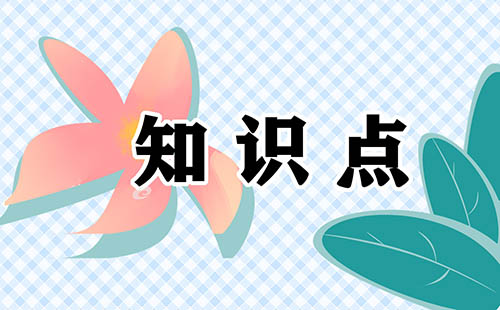小学五年级英语语法知识点集锦4篇
相关文章
英语是世界上使用最广泛的语言,所以掌握英语对以后的人生来说是必备的一项技能,不仅仅是应付眼前的考试,更是为了将来的人生多了一份选择,可以过自己想要的生活。下面是小编为大家整理的最新小学五年级英语语法知识点集锦,希望大家喜欢!

小学五年级英语语法知识点集锦1
e动词(am、is、are)+not、
情态动词can+not、
助动词(do、does)+not
如何将一个肯定的陈述句改为否定句:
1、看句中有无be动词,如有,直接在be动词后+not。
2、看句中有无情态动词,如有,直接在情态动词后+not。
3、如上述二者都没有,就应用助动词+not。分四个步骤:
(1)肯定陈述句中本来是没有助动词的,要加上去,位置在主语(某人或某物)后,动词前。
(2)确定助动词用do、does,根据句中动词,动词是原形的助动词就用do,动词是第三人称单数的助动词就用does。
(3)在助动词后加not。
(4)原句中动词假如发生变化就要恢复成原形。
小学五年级英语语法知识点集锦2
表示将来将要发生的动作, 经常和tomorrow, next year, the day after tomorrow, the year after the next, in five hours' time, etc. 表示将来的词联用。
结构:主语+助动词will+动词原形
I will go to America tomorrow.
The pilot will fly to Japan the month after the next.
Jack will move into his new house tomorrow morning.
★变疑问句将助动词移到句首
Will you go to America tomorrow?
Will the pilot fly to Japan the month after the next?
Will Jack move into his new house tomorrow morning?
★变否定句在助动词后面加not
I will not go to America tomorrow.
The pilot will not fly to Japan the month after the next.
Jack will not move into his new house tomorrow morning.
★肯定回答及否定回答
Yes, I will. / No, I will not.
Yes, he/she will. / No, he/she will not.
Yes, he will. / No, he will not.
★特殊疑问句
What will you do?
小学五年级英语语法知识点集锦3
1:“first”是序数词,与“the”相连,解释为第一。
2:像“first,term,world”作为词组出现时前面要加“the”。
3:“all”所有;后面的可数名词用复数形式,be动词用“are”。
4:“any”一些;用在否定句和一般疑问句中,与“some”同义。“some”用在肯定句中。
5:there be+数词,采用“就近原则”。
6:a map of China 与 a map of the world 要牢记。
7:要用“on the wall”,不能用“in the wall”。门、窗在墙上才能用“in the wall”。
8:can 后+动词原形。
9:play+the+乐器; play+球类;
10:like的用法
11:动词变动名词形式方法:
A--直接在动词后面+ing形式(大多数)。
--以不发音的“e”结尾的,要去掉e后再+ing,比如:dancing,making,riding。
C--重读be音节,末尾只有一个辅音,须双写末尾的字母后再+ing,如:running,swimming,sitting,putting。
12:现在进行时的构成:be动词+动词ing形式。标志:now、look、listen、it's time to。
13:现在进行时的一般疑问句 /问--be动词+人称+时态(动词ing)
答--Yes,he/She/it is/am/are. No,he/She/it isn't/aren't/am not.
14:用Are you...? Yes,I am/ we are. No,I'm not/We aren't.
15: 动词后+人称宾格形式.
16:一般现在时的构成:第三人称单数(三单)。要注意:后面的动词+s或es。
特例:have→has do→dose go→goes; 标志:often,usually。
17:有些名词变动词时要变形式,例如:teacher→teach;driver→drive.
小学五年级英语语法知识点集锦4
第一单元:
四会单词:
young年轻的 funny滑稽可笑的 tall高的 strong强壮的 kind和蔼的 old年老的 short矮的 thin瘦的 Mr先生 like像;喜欢 strict严格的 smart聪明的;巧妙的 active积极的;活跃的 quiet安静的;文静的 very很;非常 but但是
缩写形式:
who’s=who is what’s=what is he’s=he is she’s=she is
重要句型:
1.Who’s your art teacher?你们的美术老师是谁?
----Mr Hu.胡先生.
2.What’s he like?他长得什么样子? ----He’s short and thin.他又矮又瘦
3.Is she young?她年轻吗?
----Yes,she is/No, she isn’t.
以前的知识:
I have a new math teacher.我有一个新数学老师.(小学三年级已经学过I have a pen.)
注意: 划线部分可以替换.
第二单元:
四会单词:
Monday星期一 Tuesday星期二 Wednesday星期三Thursday星期四Friday星期五Saturday星期六Sunday星期日day天;日子have有;吃 on 在……时候 too也;太
短语:
do homework做作业 watch TV看电视 read books读书 What about?......怎么样?
do housework做家务 play computer games玩电脑游戏
重点句型:
1. What day is it today?今天星期几?
—It’s Monday.星期一.
2. What do we have on Mondays?星期一我们有什么课?
—We have English,science,computer and P.E.我们有英语课,科学,计算机跟体育课.
3. What do you do on Saturdays?星期六你干什么?(具体的某一天前用介词on,在具体的时间前,用介词at)
—I often do my homework.我通常做家庭作业.
4. What about you?你呢?
—I do my homework,too.我也是做家庭作业.
第三单元:
四会单词:
eggplant茄子 fish鱼green beans青豆tofu豆腐potato土豆tomato西红柿for为;给lunch中餐;午饭we我们tasty好吃的;可口的sweet甜的sour酸的fresh新鲜的salty咸的favourite最喜爱的;特别喜爱的fruit水果grape葡萄
缩写形式:
they’re=they are don’t=do not
重点句型:
1. What would you like for lunch?你午餐想吃什么?
-----I’d like some tomatoes and mutton.我想吃一些西红柿跟羊肉.
2. What’s your favourite fruit?你最喜欢的水果是什么?
------/I like apples.我喜欢苹果.
3.I don’t like grapes.我不喜欢葡萄.
4.Bananas are my favourite.我最喜欢香蕉.
第四单元
一. 单词:
empty the trash倒垃圾
cook the meals 做饭
water the flowers浇花
weep the floor扫地
clean the bedroom打扫卧室
make the bed铺床
et the table摆餐具
wash the clothes洗衣服
do the dishes洗碗碟
ut away the clothes收拾衣服
can’t = cannot(不会;不能)
use a computer(使用计算机)
二. 句子:
1. I’m helpful! I can sweep the floor。我是有用的!我能扫地。
2. Are you helpful at home?你在家有用吗?
------Sure. 当然。
3. What can you do ? 你会干什么?
------I can sweep the floor.我会扫地。
4. Can you do housework? 你能会家务吗?
------Yes I can.是的,我会 No, I can't,(but I’d like to have a try.)不,我不会,但我想试一试.(括号内的句子可以省略)
三. 语法:
1、当你想询问别人会干什么时,用What can you do? 答句I can后面加自己会做的事.
当你想知道他人会干什么时,可用What can he do ? 或者What can she do ? 答语是He can......或者是She can......
2、I can …变为一般疑问句:Can you …?
He can…或She can …变为一般疑问句:Can he …/ Can she …? 其中的he , she 也可以变为其他具体的人物。
如 My mother can cook the meals. 变为一般疑问句:Can your mother cook the meals? 答语有两种:肯定回答Yes,she can.否定回答:No,she can’t.
3、help (形容词形式)――helpful helpful (动词形式)――help
4、当句子中出现了情态动词can或其否定形式can’t时,其他的动词要用原形。
第五单元
一.单词:
air-conditioner空调
curtain窗帘
trash bin垃圾箱
closet壁橱;衣橱
mirror 镜子
end table床头柜
edroom卧室
kitchen厨房
athroom卫生间
living room客厅;起居室
in在…里面
on在…上面接
under在…下面
ear在..旁边
ehind在…后边
over在……上方
in front of在……前面
clothes 衣服
二.句子:
1.Is this your bedroom? 这是你的卧室吗?
------Yes, it is. 是的,它是。
2.I have my own room now.现在我有自己的房间了。
3.What’s it like? 它什么样?
------There is a mirror, a bed and a big closet.
这里有一面镜子,一张床和一个大衣橱。
(There be句型,某地有某物:There is / are + 家具 )
4.Where is the trash bin? 垃圾箱在哪?
------It's near the table. 它在桌子旁边.
5. The closet is near the table.衣橱在桌子旁边。
6. Many clothes are in the closet. 许多衣服在衣橱里。
三.语法:
1、There be 句型包括单数形式的There is a/an …句型和复数形式的there are …句型。There is a/an …句型表示有一个,后面跟名词单数。There are …句型表示有多个,后面一般接具体数字或some , many,再后面跟名词复数。
There be 句型又叫“存在”句型,它一般表示在某地有某物。
2、There be 句型中使用单数句式还是复数句式遵循就近原则。
3、on 与over的区别:
on在…上面。表示与下面的物体互相接触,紧挨着。
over在…上面,表示与下面的物体不接触,两个物体之间有一定的距离。
第六单元
一.单词:
ky天空 cloud云 mountain 山;山脉 river河流
flower花 grass草 lake湖泊 forest森林
ath 路;小道 park公园 picture照片 village乡村;村庄
city 城市 house房子 bridge桥 tree树
road公路 building建筑物 clean干净的
二.句子:
1.There is a forest in the nature park.在自然公园里有一个森林。
2. Is there a forest in the park? 公园里面有一个森林吗?
------ Yes, there is. 是的,有。No, there isn’t。不,没有。
(There be句型的一般疑问句:--- Is / Are there + 某物 + 某地?回答:Yes, there is / are. No, there isn't / aren't. )
3 There are many small houses in my village. 在我的村庄里有许多小房子。
5.Are there any pandas in the mountains? 山里有熊猫吗?
-----Yes, there are.是的,有/No,there aren’t. 不,没有。
三. 语法:
1、There be 的单数形式在变为一般疑问句时,将助动词be提前,与there交换位置,如句中有第一人称代词,变为第二人称,将句末的句号变为问号,其他不变。
There be 的复数形式在变为一般疑问句时,将助动词be提前,与there交换位置,然后将句中some或many变为any, 如句中有第一人称代词,变为第二人称,再将句末的句号变为问号,其他不变。
2、There be 句型表示“有”和have, has表示“有”的区别
There be句型表示“有”的意思,表示在某个地方有什么,它表示的一种存在。
如:There is a bag on the desk. 有一个书包在课桌上。
There are many books on the desk. 有许多书在课桌上。
Have, has 表示“有”的意思,表示一种占有,拥有的关系,一般表示某人有某物。当主语人称是第三人称单数时用has, 其他时候用have。如:I have a new pen. 我有一支新钢笔。
He has a big schoolbag. 他有一个大书包。
3.人称代词和物主代词
形容词性物主代词(my/your/his/her/its/our/their)+名词(用于修饰名词)
名词性物主代词(mine/yours/his/hers/its/ours/theirs则相当于形容词性物主代词+名词。


